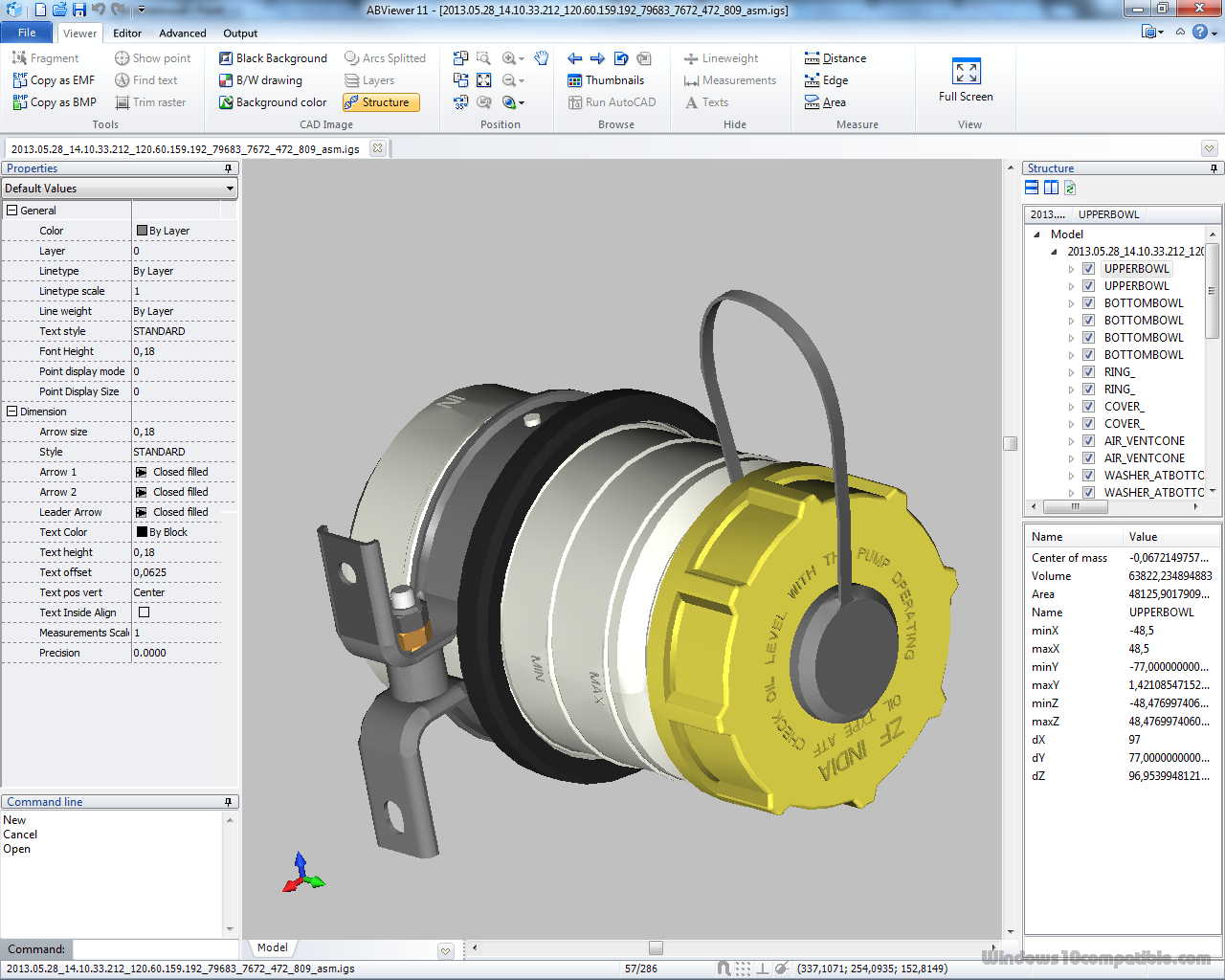


These small anomalies may result in, for example, faces that do not meet exactly at the edges or inconsistent face normals and edge directions.

This may be due to numerical limitations in the computer's ability to represent complex shapes, limitations of some older CAD file format, human errors, or translation of the data between file formats. While a 3D CAD geometry is usually true to the real object it represents, small and hardly noticeable anomalies can occur throughout the geometry. This digital version contains the 3D geometry of the product together with the information needed for manufacturing it. The goal of building the CAD model is to obtain a digital representation of the real product. Note that not all file formats are supported on all operating systems for details, see the system requirements. When these changes have been made, the CAD Import Module can export them in the IGES, STEP, Parasolid ® or ACIS ® file formats for import into other tools. Most CAD models are geometries of the objects to be manufactured, and simulation may be used to model the phenomena around this object, such as the flow of air. An example of this is creating a model domain around a CAD design, such as an enclosure for use in, for example, a CFD, acoustics, or electromagnetics analysis. These geometries can subsequently be changed by the tools within COMSOL Multiphysics ® and the CAD Import Module, including, for instance, a conscious change to the geometry. When you have installed the CAD Import Module, all CAD files are automatically converted to a Parasolid ® geometry using the Parasolid ® geometry engine that is included with the module. The separate File Import for CATIA ® V5 provides support for importing the native file format for this system.

In addition, the CAD Import Module allows you to import the native file formats of a number of CAD systems, such as SOLIDWORKS ®, Inventor ®, PTC ® Creo ® Parametric™, NX™, and AutoCAD ®.
#STP FILE AUTOCAD SOFTWARE#
You can read more about this in the interfacing section.Īll CAD software supports the export of Parasolid ®, ACIS ®, STEP, and IGES file formats, which can then be readily imported into COMSOL Multiphysics ®. If you are a CAE engineer who also uses CAD software, COMSOL provides several add-on products that connect COMSOL Multiphysics ® to each of the major CAD software packages, using a specialized LiveLink™ technology. If you are a CAE engineer who does not use CAD software, the CAD Import Module will help you work with the CAD user to ensure a smooth transition when working together. All of these features are available to ensure your geometry import process is painless. Second, for ensuring the imported geometry is ready for analysis, you can repair, defeature, or apply virtual geometry operations to your geometry to fix discrepancies during import or to simplify the geometry. First, for importing geometries created in CAD software, the CAD Import Module supports the import of a variety of different file formats, including the Parasolid ® and ACIS ® formats, standard formats like STEP and IGES, and native file formats of various CAD systems. The CAD Import Module add-on to COMSOL Multiphysics ® has two basic functions for assisting your modeling workflow.


 0 kommentar(er)
0 kommentar(er)
